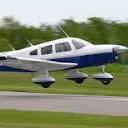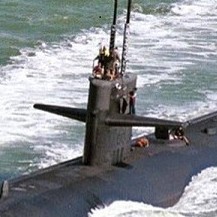LyleLanley wrote:muralir wrote:Re: the Navy putting it on all fighters, call me a cynic, but Navy brass will cling to human fighter pilots until the last one dies out. IMHO, the main barriers to unmanned carrier operations at this point aren't technological (certainly no bigger a technical challenge than any other program they're working on *cough* F35 *cough*) but inertia and political: until a drone operator can become a 4 star admiral, or we get our asses handed to us by an adversary employing carrier drones, the current crop of leaders will resist drones and prefer "real men" over "video game nerds". Same with the Air Force...
With respect to your viewpoints, I think those Admirals and Generals see drones as what they are: tools. But they're not infallible, nor are they the right solution to all problems. They have their strengths, as well as their weaknesses. And quite frankly their weaknesses in a no-kidding war, at this point, outweigh their strengths except in certain circumstances. Bandwidth limitations, especially from a CVN. Satellite bandwidth. Operating in an EM jamming environment. Etc. Just like manned aircraft also have their strengths and weaknesses, at this point, their strengths far outweighs their weaknesses. Crew fatigue. G limitations. Space that could be utilized for more gas. But they're known quantities and their crews are trained to operate when shit hits the fan. You mention the carrier suitability trials and the fact that a drone can take off and land from the boat? That's great! That's also where manned aircraft were 100 years ago. They've got a ways to go before they can safely operate from an aircraft carrier in the Taiwan Strait, rather than in the warning areas off of Chesapeake Bay.
muralir wrote:Former Navy Secretary Ray Mabus caused a huge uproar in the Navy when he said the F35 would be the last manned fighter jet the Navy and Marines would buy. You could almost hear the fighter jocks whispering "over my dead body"... These types of transformations don't occur without massive fights from supporters of the status quo (witness the love affair with aircraft carriers themselves, which, although they still have some purpose as political statements and instruments of foreign policy, are largely obsolete as warfighting tools given the massive improvement in missile technology and land-based aircraft.)
Those 'fighter jocks' probably remember the last time politicians put their political nails into the coffin of a concept that wasn't actually dead. Exhibits A through D: Aircraft carriers after WW2 and the advent of the atomic bomb. The US Marine Corps. Nuclear power vs. gas turbines. Guns on a tactical aircraft. Real change happens with technological innovation and proper application of those innovations plus strategic foresight and pragmatic decision-making. Not speeches by political appointees.
I appreciate your points and especially that you made them respectfully. I realize my original response could have easily been grounds to start a flame war

WRT drones, I'm a civilian so take my uninformed POV for what it is. But every platform has its strengths and weaknesses. But there's a difference between being conservative with uncertain changes that could cost us victory, and looking for reasons to discount genuine breakthroughs. IMHO, most of the arguments against drones fall in the latter category.
For example, you list communication difficulties in a theater eg bandwidth, EM jamming, etc. But modern fighter pilot strategy depends on the same things. Beyond visual range (BVR) fighting requires things like AWACS, satellites, etc to communicate with and send realtime info to the fighter actually launching the missile. The days of a lone fighter pilot looking out his window to see who and where his enemies are, are long gone. How are all those network issues, etc considered solveable for pilots in the heat of battle but not for drones?
And your point about drones only now able to do landings that humans were doing 100 years ago is true. But that's the type of short term thinking I'm taking about. It took 10 years to get a drone to land on a peaceful sea. In 10 years they'll be capable of landing in the roughest seas. Just ask Chess grandmasters how quickly a lead against the machines can evaporate

But that's not even the biggest point. Say it takes 20 years to develop the AI to land in the roughest seas. It's still better because you only have to develop it once. The minute the software is complete, you can download it into all the drones and they *instantly* get the same capacity.
If you train one pilot to land on a carrier, you have one pilot who can land on a carrier. Training another one will still take the same time and effort. Write the software for 1 drone to land on a carrier, and *every* drone can now land on a carrier. And the engineers can then focus on improving the software to be even better, rather than taking a new class of kids every year and training them just to be almost as good as the retiring pilots they're replacing.
The main reason why I believe drones will replace jets is because ultimately, the limitations of drones like bandwidth, network reliability, software, etc are solveable. While the limits of jets, mainly the limits of the pilots who fly them, are not. We've hit the limits of what human beings can stand. Already, the main limit to designing jets with faster maneuverability is the limit on the Gs that a human body can sustain. And we've already optimized biology by picking only the best people for the job and using things like MAST trousers and stuff to compensate for biological limits.
We're long past the point where the machine is the limit. Advances in metallurgy, modeling, engine design, etc. Means the main limit now is the 80kg of flesh in the pilot seat and what it can withstand before becoming incapacitated. We can't really improve biology, but we can always improve the tech.
Sure, in the initial training period, drones won't so as well as pilots. Which is why we need both for now. But the sooner we start to develop and really invest in drones, the sooner we'll exceed what the best fighter pilots can do.







